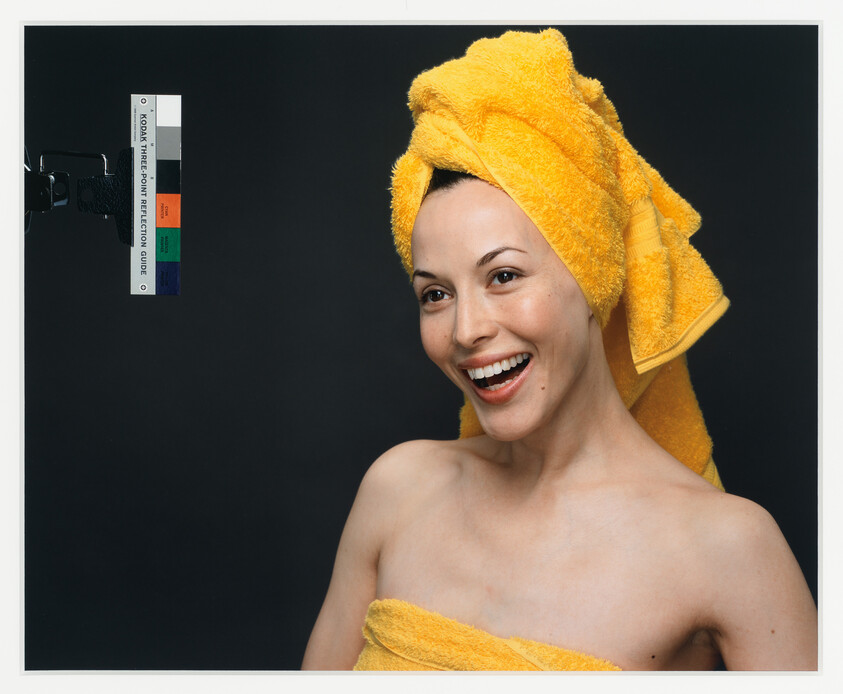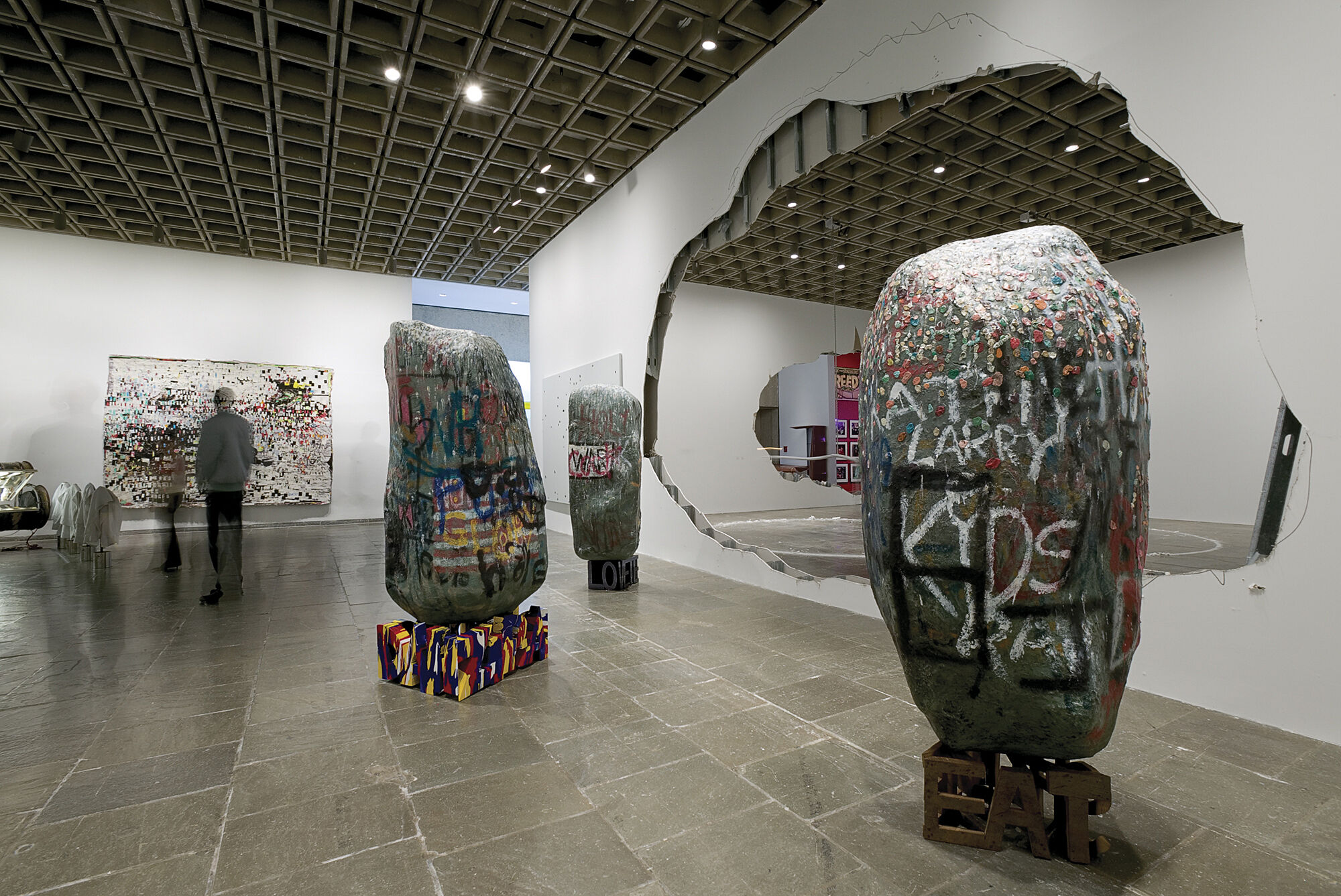Christopher Williams
Kodak Three Point Reflection Guide © 1968 Eastman Kodak Company, 1968 (Meiko laughing), Vancouver, B.C., April 6, 2005
2005
Like much of Christopher Williams’s work, Kodak Three Point Reflection Guide sends up the aesthetic conventions of photographic representation, in particular, advertising imagery. Here, Williams makes visible the typically hidden device of the Kodak color bar—the “Three Point Reflection Guide” of the title—used by photographers to measure the trueness of a color in an image. The picture was in fact taken by a professional photographer according to the instructions of the artist, who selected the model by following a casting call used by French filmmaker Jacques Tati for his 1967 film Playtime: "A girl about 20-25 years old, coy, a little awkward, but with intelligent eyes. . .most important is the reserved appearance, due to a good education." On first glance, this image appears to be a pristine, even sterile, commercial photograph, its model flashing the clean smile fetishized by contemporary advertising. However, upon closer inspection, the image gives the lie to its artificiality: the woman is slightly older than usual models, minor imperfections in her skin have not been retouched in post-production, and her bright yellow towel is a nod to Kodak’s signature color.
Not on view
Date
2005
Classification
Photographs
Medium
Chromogenic print
Dimensions
Sheet (sight): 20 × 24 in. (50.8 × 61 cm)
Image (sight): 18 1/4 × 22 9/16 in. (46.4 × 57.3 cm)
Frame: 34 × 37 13/16 × 1 1/2 in. (86.4 × 96 × 3.8 cm)
Accession number
2006.31
Edition
Ed. 10
Credit line
Purchase, with funds from the Photography Committee
Rights and reproductions
© artist or artist's estate


